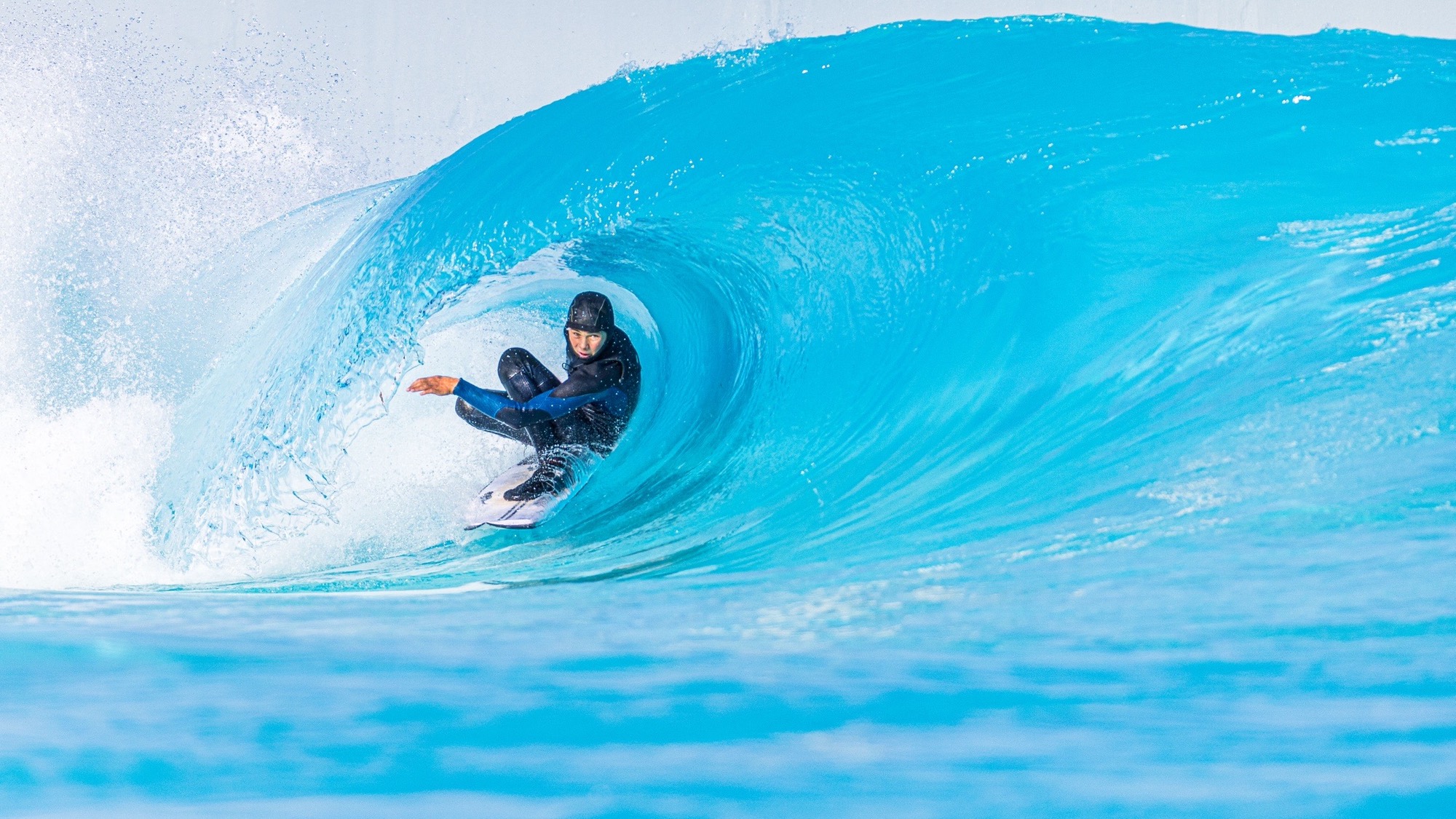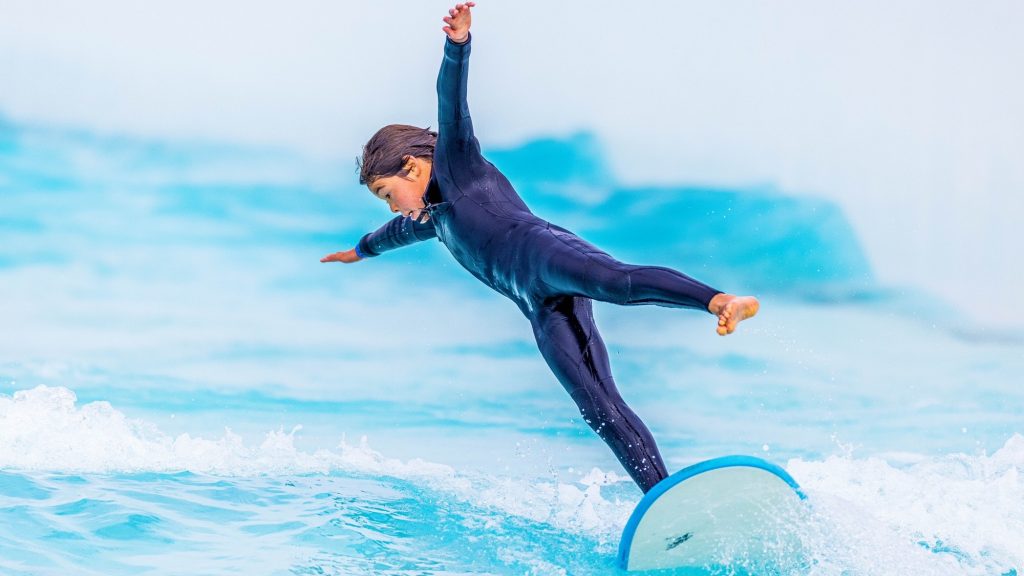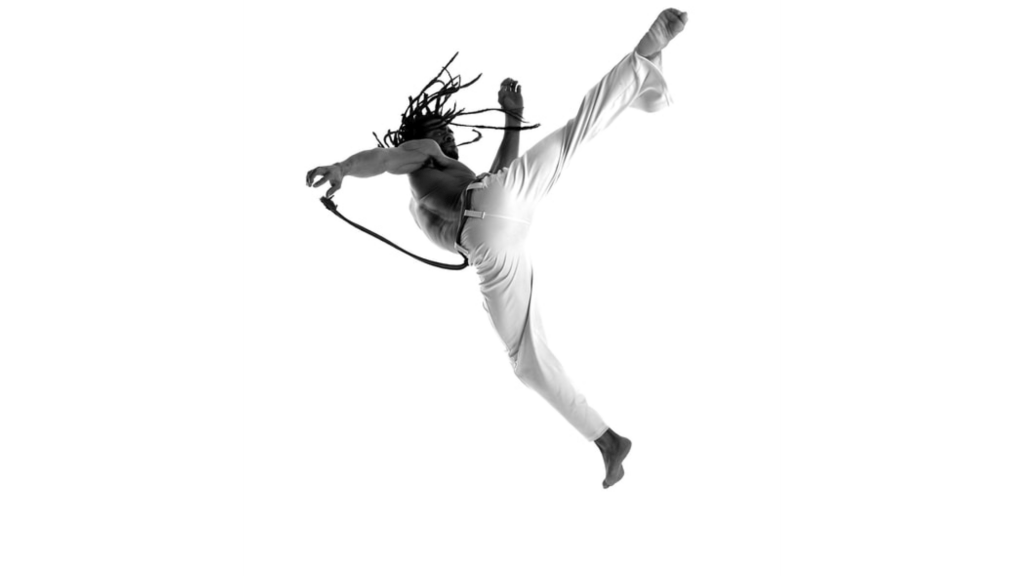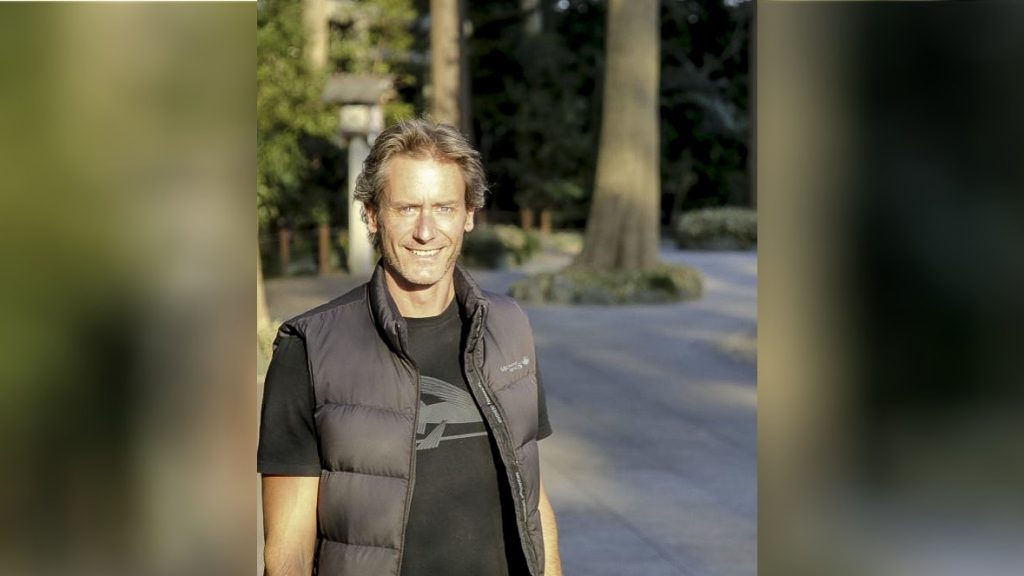WavePoolMag Photographer Series: Travis de Clifford

During WavePoolMag’s recent trip through Australia, we met Travis de Clifford, an affable bloke who can be found most work days adjacent the lifeguard tower at Urbnsurf. He was shooting a beginner session. I mentioned that it must be easy, just point and shoot at someone wide-stancing it to the shore. But I learned that’s not really the case.
“They’re the most hectic sessions to try and shoot because there are people standing up and falling down all over the place. And there’s not really any order to it. But, you know, the photos make someone super, super stoked.”
It was this last sentence that endeared us to Travis. He is totally aware of how much joy a surf photo can bring to someone.
“I really enjoy the fact that somebody who’s just learning or is getting their stoke on, they get to go and have a look at the experience through the photos and relive it a bit. I mean, I didn’t have that when I was learning to surf.”
So how did he get here? Travis’ photography background is in advertising and editorial work in everything from architecture to jewelry to movement. He shoots lots of movement but in a controlled studio. We wondered if a wave pool could be considered a ‘controlled studio.’ When he had a break we let fire with this question and others.

Could a wave pool be considered a photo studio?
Well, it is in the sense that it’s a predictable environment other than the weather. I’m not having to chase people around. I mean, I’ll move up and down the pool and come around the walls and get different vantage points. But it’s like a little mini cyclorama of water, isn’t it?
So how does outdoor movement compare to indoor studio movement photography?
Well, in terms of movement, it’s right in my wheelhouse in the sense that, like I’m used to being able to predict what’s about to happen. And being a surfer makes it all the easier. But shooting movement for so many years and I’m a surfer and a martial artist and I teach a dojo of students as well. It’s that comfort zone of watching and observing movement. And I love it. And because I’m a surfer, it’s combining those passions, you know?
Did you study photography or you just picked it up?
No, I did a bachelor’s degree at RMIT in Melbourne and did the normal route of assisting professionals until I went out on my own and I started with an agency in Melbourne for the first four years. And then just dealt directly with aid agencies and clients after that.

Do you do ocean surf photography?
A little bit. But it’s been one of those things where. Although I’ve shot surfing in the past, my issue has always been that if I’m shooting then I’m not surfing. Yeah, and I’m always, I think, so keen to get in the water that I’ve looked at surf photography as, oh, half of my time is going to be spent shooting and working rather than surfing. And surfing comes first.
And do you get to jump in the pool?
I do, yeah. So we can get a shift in before or after the public hours. Like we can get a session in before or after our shift, which is great. Yes, I’m always looking forward to that.
So you could surf every workday?
I could, but I’m only, I mean, we’re all casual at the moment, so it’s not as regular. But I live out by the coast so I get to surf daily anyway.

So what is the best part about this job?
I think what I love about it is the fact that when you’re capturing that joy or the embarrassment or the laughter or just the froth of the moment of learning, or even if you’re not a learner, it’s just, I don’t know what it is, but for as long as I can remember surfers love to see images of themselves on the wave as well as enjoying the wave. Yeah, there’s something about observing it. Once the wetsuits come off, there’s a slight narcissism to every surfer. I think we all love seeing images of ourselves.
What is the most challenging part of this job?
It’s definitely the weather because, I mean, this works every day of the year. Yeah. Whereas surf photography in the natural environment, you’re only out there when the conditions are good and really just right. But I think it would also be the cold morning starts when you’ve got a couple of layers on and are trying to stay warm. But other than that, there’s not a lot of difficulty to it because it really is a joy and to get paid for it is a bonus.
Share something odd that people don’t know about or Urbnsurf, something you wouldn’t read on the website.
What surprised me but also didn’t surprise me is the fact that you can still get caught in a rip. And watching people get caught in a rip and then looking bewildered as if to say, ‘But I’m not in the ocean.’ And we all know that, well, all that water from the set has got to go somewhere. And the thing is that even here, the rip can change a little bit depending on the setting.
Related Coverage
